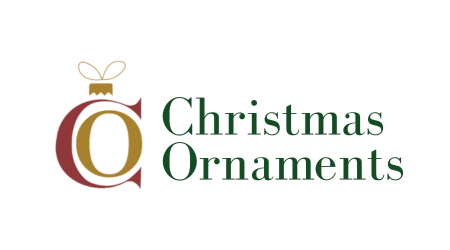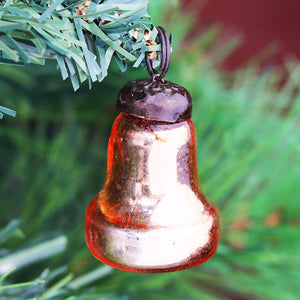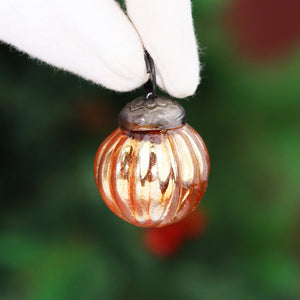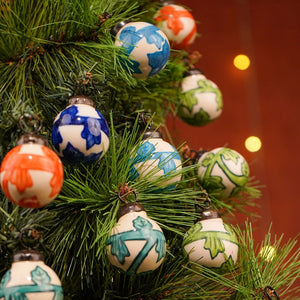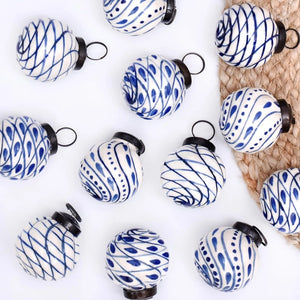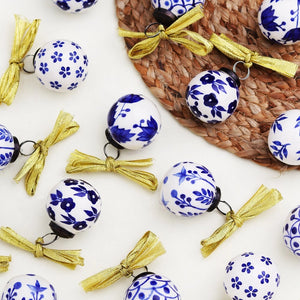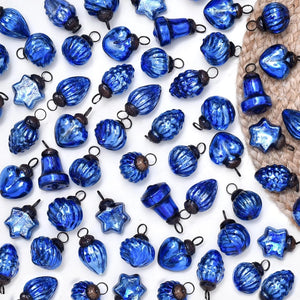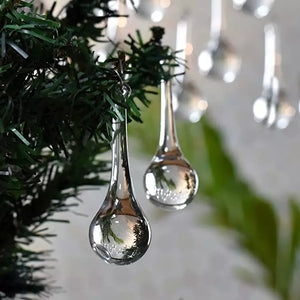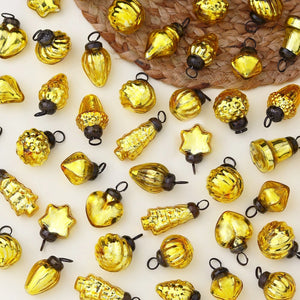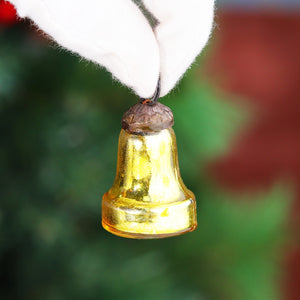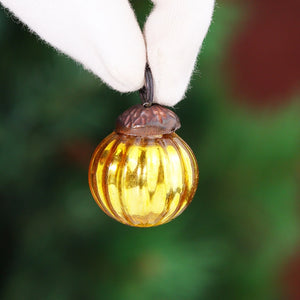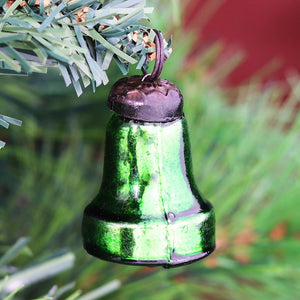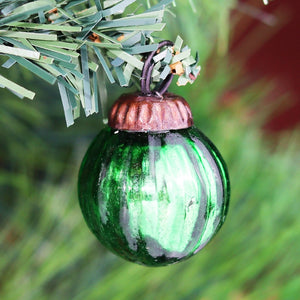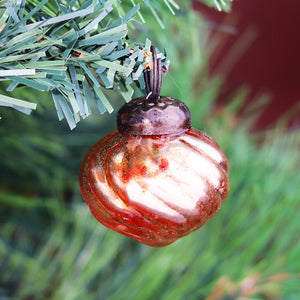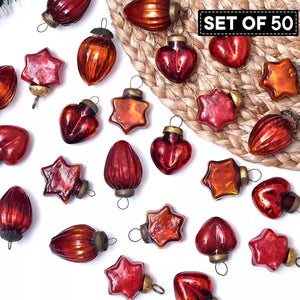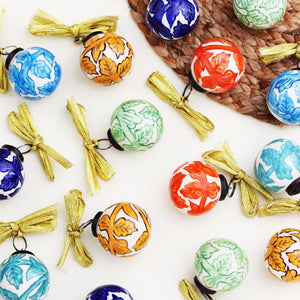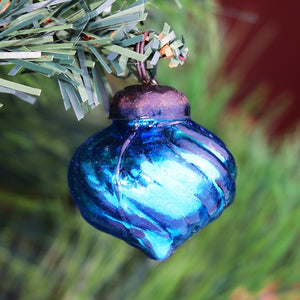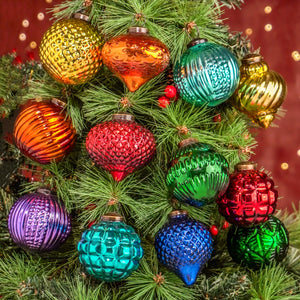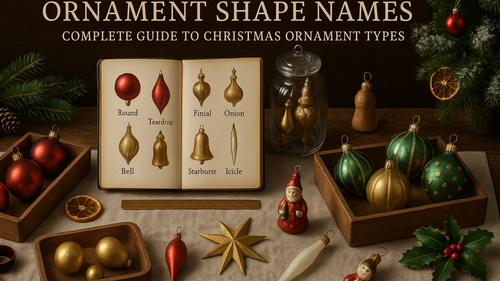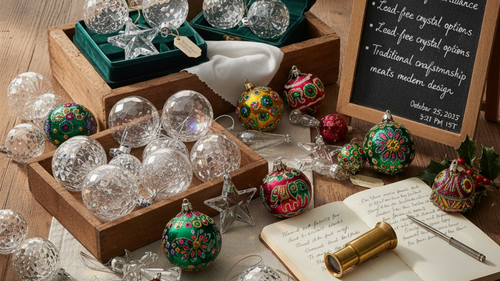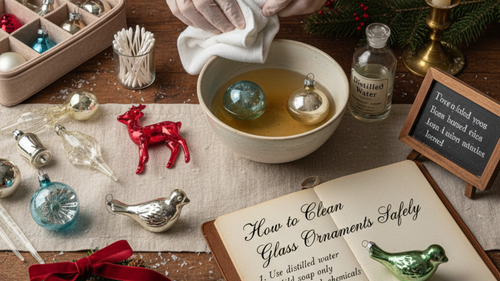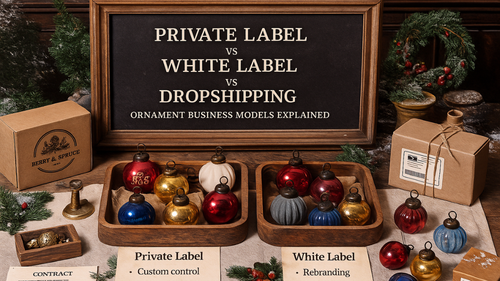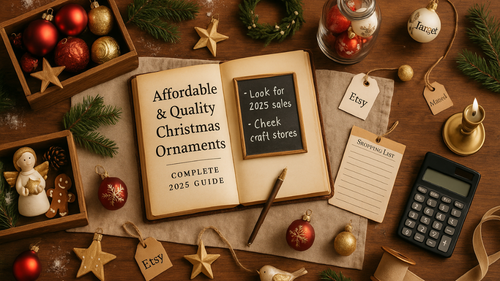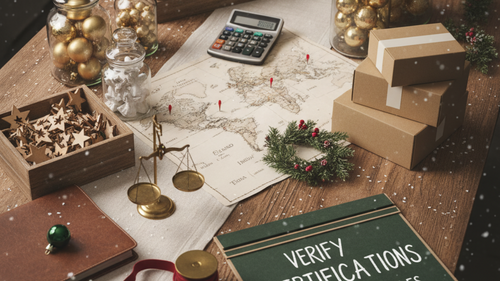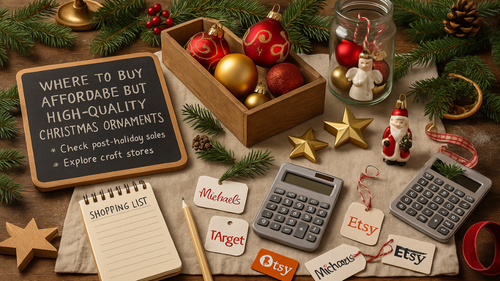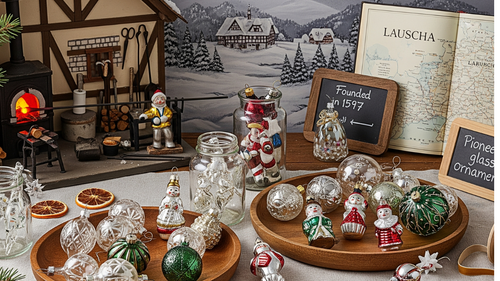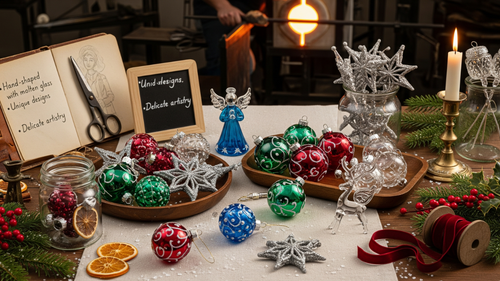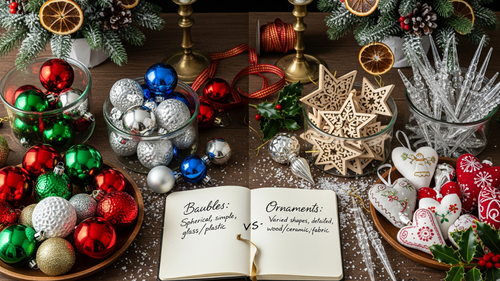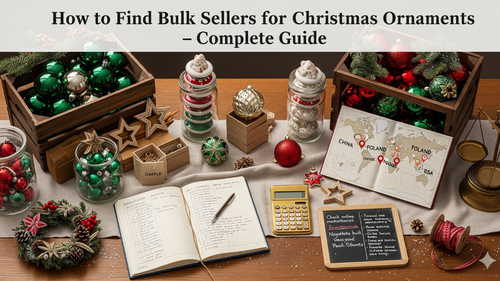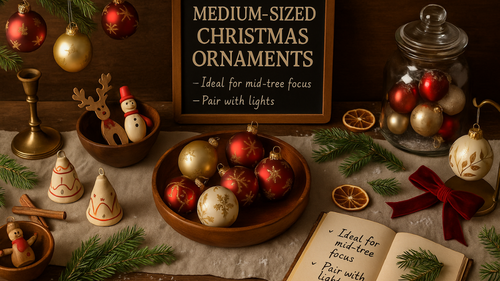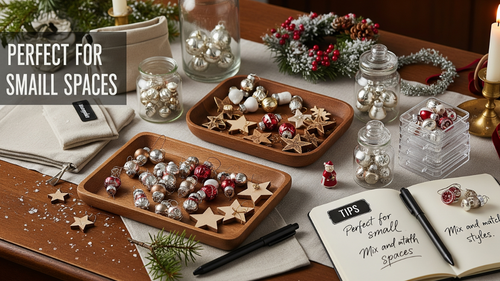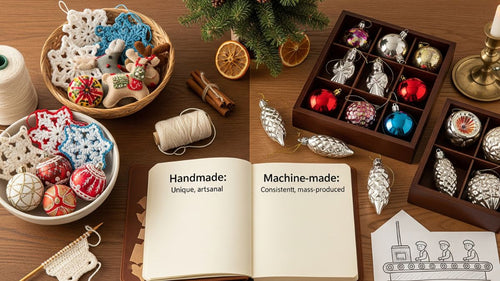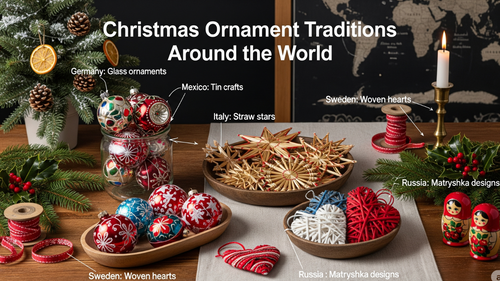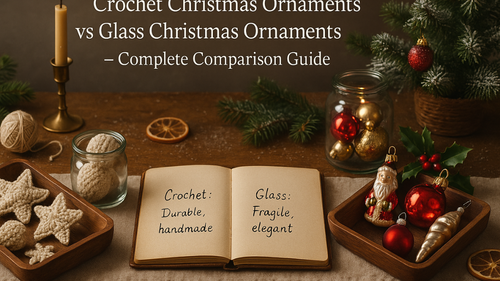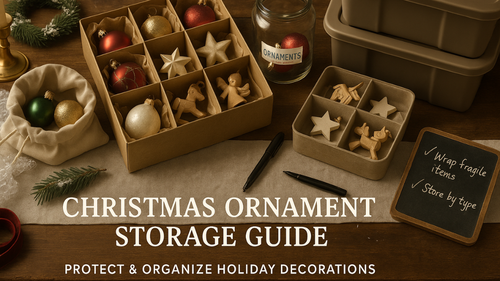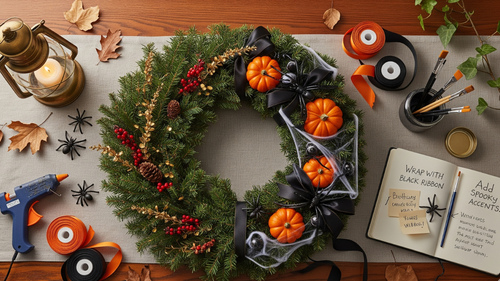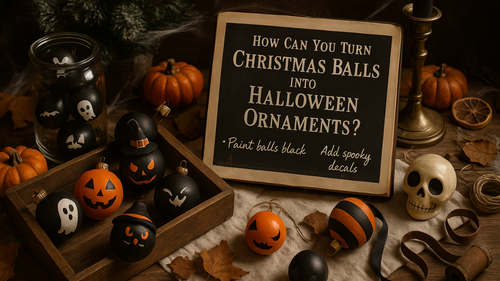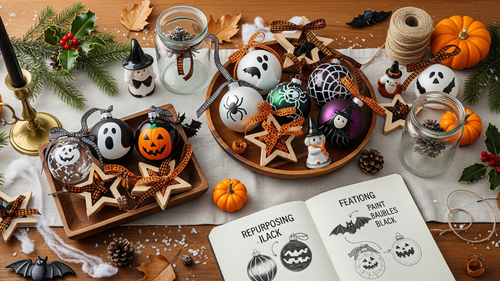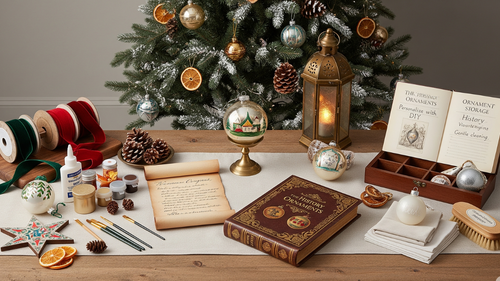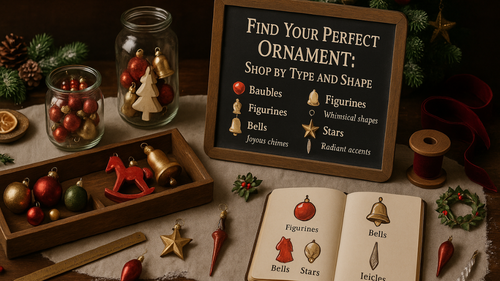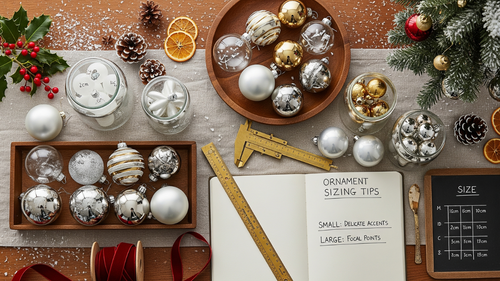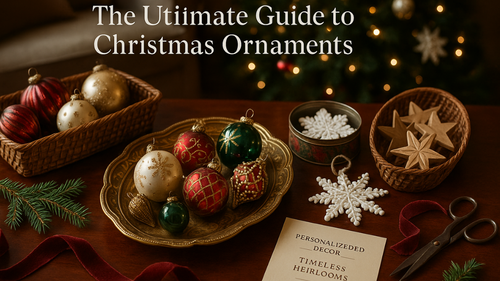Christmas ornament materials determine everything from durability and safety to visual impact and long-term value. Whether you're decorating your first tree or expanding a generations-old collection, understanding material properties helps you make informed choices that align with your decorating goals, budget, and lifestyle needs.
This comprehensive guide examines nine primary ornament materials, comparing their strengths, maintenance requirements, and ideal applications. From delicate hand-blown glass to sustainable wooden options, each material offers unique benefits for different decorating scenarios and personal preferences.
Key Takeaways: Choosing the Right Ornament Materials
Safety First
Wooden, fabric, and paper ornaments provide the safest options for homes with children and pets. Pre-1978 vintage ornaments may contain lead paint and require careful handling. Mercury glass should be discarded if cracked to prevent silver compound exposure.
Durability Rankings
Metal ornaments offer the highest durability, withstanding outdoor conditions and lasting decades with minimal care. Ceramic and wooden ornaments provide excellent longevity with proper handling. Glass ornaments require careful storage but can last generations when protected from thermal shock.
Budget Considerations
Paper ornaments cost 60–80% less than glass alternatives, making them ideal for large displays or temporary decorating. Mid-range options include wooden and fabric ornaments at $1–40 per piece. Premium collectible ornaments range from $15–1000+ but may appreciate in value over time.
Maintenance Requirements
Metal and wooden ornaments require minimal maintenance beyond annual cleaning. Glass and ceramic pieces need careful handling and climate-controlled storage. Paper ornaments offer convenience but lack long-term durability for heirloom collections.
Featured Products
Environmental Impact
FSC-certified wooden ornaments, recycled paper decorations, and biodegradable materials minimize environmental impact. Locally sourced options reduce transportation emissions by up to 70%. Handmade alternatives support artisan communities while providing unique design elements.
Visual Effects
Glass ornaments reflect 85% more light than plastic alternatives, creating superior sparkle effects. Metal finishes provide lustrous shine ideal for glamorous themes. Matte ceramic and fabric ornaments absorb light, creating subtle focal points and texture contrast.
Why Ornament Material Matters for Durability & Décor Style
Christmas ornament materials directly impact longevity, safety, and aesthetic appeal. Glass ornaments reflect 85% more light than plastic alternatives, creating superior sparkle effects. Metal ornaments withstand outdoor temperatures from -20°F to 120°F without structural damage. Wooden ornaments typically last 15-20 years with proper care, while ceramic pieces can endure generations when handled correctly.
Featured Products
Material choice affects decorating flexibility. Lightweight paper ornaments work best on delicate branches supporting under 2 ounces per decoration. Heavy ceramic or metal pieces require sturdy branch placement on trees over 6 feet tall. Fabric ornaments provide texture contrast and absorb ambient light rather than reflecting it.
Safety considerations vary by material. Lead-free glass ornaments meet current safety standards, while vintage pre-1980 ornaments may contain lead paint. Wooden ornaments treated with food-safe finishes remain child-friendly. Metal ornaments with smooth edges prevent cuts during handling. Read our guide on Christmas Ornaments.
Guide to Ornament Materials & Types

Glass Christmas Ornaments
Hand-blown glass ornaments feature unique variations in thickness and shape, with artisan pieces weighing 0.5-2.5 ounces each. Frosted glass ornaments undergo acid-etching processes that create matte finishes while maintaining structural integrity. Painted glass ornaments use specialized kiln-fired paints that bond permanently at temperatures exceeding 1000°F.
Featured Products
Care and Storage
Store glass ornaments in individual compartments using acid-free tissue paper. Temperature fluctuations exceeding 40°F can cause thermal stress fractures. Clean with microfiber cloths and distilled water to prevent mineral deposits. Avoid household glass cleaners containing ammonia, which can damage metallic finishes.
Decorating Applications
Position glass ornaments on interior branches to prevent wind damage. Cluster 3-5 similar-sized pieces for visual impact. Mercury glass finishes complement silver and gold color schemes, while clear glass amplifies LED lighting effects by 30-40%.
Wooden Christmas Ornaments
Carved wooden ornaments typically use basswood, pine, or maple due to their fine-grained structure and carving properties. Laser-cut wooden ornaments achieve precision details impossible with hand carving, with cuts accurate to 0.001 inches. Painted wooden ornaments use water-based acrylics that penetrate wood fibers for permanent color retention.
Personalization Options
Engraving depths of 0.5-1mm provide optimal visibility without compromising structural integrity. Wood burning techniques create permanent markings resistant to fading. Names, dates, and initials remain crisp for decades when properly executed.
Sustainable Sourcing
FSC-certified wooden ornaments ensure responsible forest management. Locally sourced wood reduces transportation emissions by up to 70%. Reclaimed wood ornaments repurpose materials that would otherwise decompose in landfills.
Ceramic Christmas Ornaments
Glazed ceramic ornaments undergo two firing processes: bisque firing at 1800°F and glaze firing at 2000°F. Hand-painted ceramic ornaments use underglazes that fuse permanently during firing. Porcelain ornaments contain higher kaolin clay content, resulting in translucent qualities and superior strength.
Display Techniques
Ceramic ornaments weigh 1.5-4 ounces, requiring branches capable of supporting 25% additional weight for safety margins. Group odd numbers of ceramic pieces for balanced visual composition. Matte-finished ceramics absorb light, creating subtle focal points.
Collectible Value
Limited-edition ceramic ornaments appreciate 5-15% annually when maintained in original condition. Hallmark Keepsake ornaments from the 1970s-1980s command premium prices among collectors. Documentation and original packaging significantly impact resale value.
Fabric Christmas Ornaments
Knitted fabric ornaments use cotton, wool, or acrylic yarns with varying texture properties. Sewn fabric ornaments incorporate quilting techniques for dimensional effects. Hand-stitched details require 2-8 hours per ornament depending on complexity.
Construction Methods
Batting thickness of 1/4 inch provides optimal shape retention without excessive bulk. Polyester fiberfill maintains loft better than cotton alternatives. Interfacing stabilizes fabric edges and prevents fraying over time.
Maintenance Requirements
Spot-clean fabric ornaments using mild detergent solutions. Avoid submerging completely to prevent adhesive failure. Store in breathable containers to prevent moisture accumulation and mildew formation.
Metal Christmas Ornaments
Copper ornaments develop natural patina over 2-5 years, transitioning from bright orange to green tones. Silver-plated ornaments require periodic polishing to maintain luster and prevent tarnishing. Gold-filled ornaments contain 50 times more gold than gold-plated alternatives, ensuring longevity.
Personalization Techniques
Engraving depths of 0.25mm provide visibility while preserving structural integrity. Hand-stamping creates unique character variations impossible with machine engraving. Laser engraving achieves consistent depth and spacing across multiple pieces.
Corrosion Resistance
Powder-coated metal ornaments resist scratching and fading for 15-20 years outdoors. Stainless steel components eliminate rust concerns in humid environments. Clear protective coatings extend finish life by 3-5 years.
Paper Christmas Ornaments
Origami ornaments use specialized papers weighing 60-80 GSM for optimal folding properties. Cut-paper ornaments require precision tools for intricate designs and clean edges. Pop-up mechanisms create three-dimensional effects from flat paper sheets.
Environmental Benefits
Recycled paper ornaments divert waste from landfills while maintaining decorative appeal. Biodegradable options decompose within 2-6 months in compost conditions. Seed paper ornaments can be planted after the holiday season.
Cost Effectiveness
Paper ornaments cost 60-80% less than equivalent glass or ceramic alternatives. Bulk production reduces individual unit costs to under $1 per ornament. DIY paper ornaments require minimal materials and basic crafting skills.
Personalized Christmas Ornaments
Photo ornaments use sublimation printing for permanent image transfer onto ceramic or metal substrates. Name personalization employs vinyl lettering, engraving, or hand-painting techniques. Initial ornaments feature monogram styling with serif or script font options.
Memory Preservation
Digital photo printing maintains image quality for 50+ years when stored properly. UV-resistant inks prevent fading in normal indoor lighting conditions. Laminated photo inserts provide moisture protection and easy replacement options.
Gift Potential
Personalized ornaments create lasting keepsakes commemorating special occasions, relationships, or achievements. Custom text accommodates names, dates, locations, or meaningful phrases. Presentation packaging enhances gift-giving appeal.
Vintage Christmas Ornaments
Shiny Brite ornaments from the 1940s-1960s feature silver nitrate coatings and hand-painted details. Mercury glass ornaments contain actual silver compounds, creating superior reflective properties. Figural ornaments represent characters, animals, or objects in three-dimensional form.
Authentication Methods
Original Shiny Brite ornaments display company markings and patent numbers on metal caps. Mercury glass shows slight variations in silver coating thickness, indicating hand-application. Reproductions lack the weight and finish quality of authentic vintage pieces.
Safety Considerations
Pre-1978 painted ornaments may contain lead-based paints requiring careful handling. Mercury glass ornaments should not be repaired if cracked due to potential silver compound exposure. Professional restoration services ensure safe preservation of valuable pieces.
Handmade Christmas Ornaments
Crocheted ornaments use cotton thread in sizes 10-30 for delicate lacework patterns. Beaded ornaments incorporate glass, crystal, or wooden beads threaded on wire or string foundations. Polymer clay ornaments cure at 275°F for permanent hardening.
Artisan Support
Small-batch production ensures quality control and unique design elements. Fair trade certification guarantees ethical labor practices and fair compensation. Local artisans reduce shipping distances and support regional economies.
Uniqueness Value
Handmade variations create one-of-a-kind pieces impossible to mass-produce. Artisan signatures or marks establish provenance and authenticity. Limited production runs increase collectible potential over time.
Collectible Christmas Ornaments
Hallmark Keepsake ornaments date to 1973, with annual releases featuring licensed characters and original designs. Disney ornaments incorporate copyrighted characters with official licensing agreements. Christopher Radko ornaments use European glass-blowing techniques and limited production numbers.
Investment Potential
Rare collectible ornaments appreciate 5-20% annually based on condition, rarity, and demand. First-edition releases command higher premiums than subsequent productions. Documentation, original packaging, and certificates of authenticity significantly impact value.
Preservation Requirements
Climate-controlled storage maintains optimal temperature and humidity levels. UV-filtering display cases prevent light damage to colors and finishes. Proper handling techniques prevent chips, cracks, or other damage that reduces collectible value.
Material Comparison Guide
| Material | Care Level | Durability | Best Use | Visual Effect | Price Range |
|---|---|---|---|---|---|
| Glass | High | Moderate | Indoor trees | High reflectivity | $2-50 |
| Ceramic | Moderate | High | Heirloom collections | Matte elegance | $5-100 |
| Metal | Low | Very High | Outdoor displays | Lustrous shine | $3-75 |
| Wood | Low | High | Rustic themes | Natural texture | $1-40 |
| Fabric | Moderate | Moderate | Cozy décor | Soft texture | $2-25 |
| Paper | High | Low | Temporary displays | Lightweight color | $0.50-15 |
| Personalized | Varies | Varies | Gifts/memories | Custom appeal | $5-150 |
| Vintage | Very High | Variable | Collections | Nostalgic charm | $10-500+ |
| Collectible | High | High | Investment/display | Premium finish | $15-1000+ |
Matching Materials to Décor Themes & Tree Sizes
Mini Trees & Tabletop Displays
Trees under 4 feet accommodate ornaments weighing less than 1 ounce each. Paper and lightweight fabric ornaments provide volume without overwhelming small branches. Miniature glass ornaments scaled to tree proportions maintain visual balance. Avoid heavy ceramic or large metal pieces that can cause branch drooping.
Full-Size Trees & Mixed Material Styling
Trees 6-8 feet tall support diverse material combinations effectively. Layer materials by depth: place reflective glass ornaments toward interior branches, matte ceramic pieces in middle zones, and textured fabric ornaments on outer edges. This creates visual depth and prevents overcrowding.
Eco-Friendly Material Selection
Sustainable options include FSC-certified wooden ornaments, recycled paper decorations, and natural fabric pieces. Avoid plastic alternatives that contribute to environmental waste. Choose locally-sourced materials to reduce transportation emissions. Biodegradable options allow guilt-free disposal after use.
How Should You Care for Different Ornament Types?
Glass & Ceramic Maintenance
Clean glass ornaments with distilled water and lint-free cloths to prevent water spots. Remove tarnish from glass silvering using specialized mercury glass cleaners. Store ceramic pieces individually wrapped in acid-free tissue paper within padded containers. Avoid temperature extremes that cause thermal shock and cracking.
Metal & Wood Care
Polish metal ornaments with appropriate cleaners: copper requires different products than silver or gold. Apply protective wax coatings to prevent oxidation during storage. Clean wooden ornaments with slightly damp cloths, avoiding excess moisture that causes warping. Reapply wood finish every 3-5 years for outdoor pieces.
Fabric & Paper Handling
Vacuum fabric ornaments using low suction and soft brush attachments. Store in breathable containers with cedar blocks to deter insects. Keep paper ornaments away from direct sunlight and moisture. Use archival storage boxes for long-term preservation of valuable paper pieces.
Long-term Storage Solutions
Maintain storage temperatures between 65-70°F with 45-55% relative humidity. Use silica gel packets to control moisture in sealed containers. Label storage boxes with contents and dates for easy identification. Inspect stored ornaments annually for signs of deterioration or pest damage.
Frequently Asked Questions
Which materials work best with children and pets?
Wooden, fabric, and paper ornaments provide the safest options around children and pets. These materials resist shattering and typically use non-toxic finishes. Avoid glass, ceramic, or small metal pieces that pose choking hazards. Position breakable ornaments on upper branches beyond reach.
How should fragile ornaments be stored safely?
Use compartmentalized storage boxes with individual slots for each ornament. Wrap fragile pieces in acid-free tissue paper or bubble wrap. Store boxes in climate-controlled areas away from temperature fluctuations. Stack storage containers carefully to prevent crushing bottom layers.
Can wooden ornaments withstand outdoor display?
Wooden ornaments treated with marine-grade finishes tolerate outdoor conditions for 5-10 years. Untreated wood deteriorates rapidly when exposed to moisture and UV radiation. Bring wooden ornaments indoors during severe weather to prevent damage. Reapply protective coatings annually for outdoor use.
Are vintage ornaments safe to use today?
Pre-1978 painted ornaments may contain lead paint, requiring careful handling. Avoid letting children handle vintage pieces unsupervised. Mercury glass ornaments contain silver compounds that pose minimal risk when intact but should be discarded if cracked. Professional testing can confirm the safety of questionable vintage pieces.
